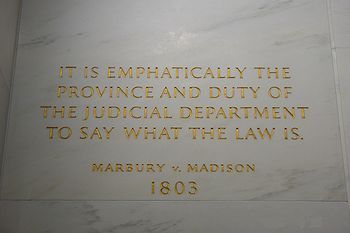Cross posted from The Stars Hollow Gazette
 I’m not sure about the rest of you, but I need a break from reality, at least for a few hours. The chance to sit in front of the big tube with a drink and a bowl of popcorn or other finger food and watch the glitz and glamor as the stars walk down the red carpet and make fools of themselves bumbling the lines of acceptance speeches.
I’m not sure about the rest of you, but I need a break from reality, at least for a few hours. The chance to sit in front of the big tube with a drink and a bowl of popcorn or other finger food and watch the glitz and glamor as the stars walk down the red carpet and make fools of themselves bumbling the lines of acceptance speeches.
Tomorrow night at The Stars Hollow Gazette, I will be hosting a live blog of the 84rd Academy Awards starting at 7:00 PM EST when the march of celebrities into the Kodak Theater begins. Like last year, I haven’t seen any of these movies. If it weren’t for all the hype about a few of them, I couldn’t even tell you the plot. This year’s show will be hosted by Billy Crystal who has been referred to as “the Oscars’ answer to the Texan oil well firefighter, Red Adair.”
Some folks make this show like the Super Bowl with special drinks and food. Some go as far as getting dressed. Some go for simple, while some just go all out for exotic drinks and fancy food. The fanciest I get is putting on my sequin-adorned blue suede pumps with my sweats, an extra olive in my martini and maybe some fresh grated Parmesan cheese on my popcorn. Last year I listed some of the special drinks that were concocted specially for some of the nominees. This year there is only one drink that the “in” crowd will be sipping, the martini, in honor of the movie, The Artist, that is expected to win “Best Picture”. I like mine with vodka.
 In perusing the internet for new treats that would be suitable for the event, I found a great piece in the New York Times that has the recipes for 101 appetizers that can be made in 20 minutes or less. Here are just a few that sounded tasty.
In perusing the internet for new treats that would be suitable for the event, I found a great piece in the New York Times that has the recipes for 101 appetizers that can be made in 20 minutes or less. Here are just a few that sounded tasty.
On Bread or Crackers
Toss high-quality crab meat with minced shallots, a little tarragon or a lot of parsley and/or basil, and enough mayonnaise to bind. Also good on lettuce leaves.
Chop shrimp fine, then sauté in a minimum of oil, or poach quickly and drain. Mix premade pesto with mayonnaise so that it is gluey. Combine cooled shrimp with sufficient pesto to bind; chill.
Beef tartare: Carefully pulse good beef in food processor. For each pound, add an egg, a teaspoon dry mustard, a tablespoon Dijon mustard, a tablespoon Worcestershire, Tabasco to taste, 1/2 cup chopped scallions and a touch of minced garlic. Salt and pepper, if necessary. Amazing stuff.
Bruschetta
Bruschetta is the basis for so many good things. Don’t make it too crisp, and start with good country bread. Brush thick slices with olive oil. Broil until toasted on both sides. While it’s still hot, rub with cut clove of garlic on one side (optional). Drizzle with a bit more olive oil, sprinkle with salt, and serve, or top with prosciutto or tapenade.
Top bruschetta with chopped, well-cooked broccoli rabe or other greens tossed with minced garlic and olive oil while still warm. Health food, practically.
On Toothpicks
Cut chorizo into chunks. Cook in a lightly oiled skillet until nicely browned. Kielbasa is equally good (or better), if not as hip.
Portable Caprese: Skewer a small ball of mozzarella, a grape tomato and a bit of basil leaf. Sprinkle with salt and pepper, and drizzle with oil.
A no-brainer: Cut slab of bacon into 1/2-inch chunks. Cook in a skillet, a broiler or a high-heat oven until nice and crisp. Skewer with a grape tomato.
Crab cakes: For each pound crab meat, add an egg, 1/4 cup each minced bell pepper and onion, 1/4 cup mayonnaise, 1 tablespoon Dijon mustard, 2 tablespoons bread or cracker crumbs, salt and pepper. Shape into small cakes and refrigerate, if time allows. Dredge in flour, then brown in oil (or oil mixed with butter). Serve with lemon wedges, aioli or tartar sauce.
On Skewers
Chicken kebab, Greek style: Cut boneless, skinless chicken thighs into 1-inch chunks. Toss with minced onion, minced garlic, lemon juice, olive oil, salt, pepper, crumbled bay leaf and oregano. Skewer. Broil, turning occasionally, until browned.
Pork kebabs, West Indian style: Mix 1 tablespoon garlic, 1/2 teaspoon ground allspice, a pinch of nutmeg, a teaspoon of fresh thyme leaves, 1/4 cup chopped onion and the juice of a lime. Toss with 1 pound pork shoulder (you need some fat or these will be tough) cut into 1-inch cubes. Skewer and broil about 5 minutes.
Finger Foods
Shrimp cocktail: Combine ketchup with chili powder, pepper, lemon juice, Worcestershire, Tabasco and horseradish. Make lots, because people will be double-dipping. Serve with cooked shrimp.
Soy ginger wings: This time baste with equal parts vinegar and soy sauce, mixed with a couple of tablespoons each minced ginger and sesame oil. You can sprinkle toasted sesame seeds on the wings.
Dips and Spreads
Hummus: Truly one of the great culinary inventions. Mix four parts well-cooked or canned chickpeas with one part tahini, along with some of its oil, in a food processor. Add garlic, cumin or pimentón and purée, adding as much olive oil as needed. Stir in lemon juice, salt and pepper to taste; garnish with olive oil and pimentón.
Boursin: Maybe you have a few Ritz? Mash cream cheese with minced garlic (if you have roasted garlic, so much the better), pepper and small amounts of minced thyme, tarragon and rosemary.
Little Sandwich Triangles
Layer cooked ham and cheese (Gruyère, Cantal or good Cheddar) on thin bread, then press and grill in a not-too-hot skillet with butter or oil.
Cheese quesadillas: Use 4-inch tortillas; on each, put grated cheese, scallions and minced canned green chilies or chopped fresh poblanos. Salsa and beans are optional. Top with another tortilla. Griddle with oil, turning once, about 5 minutes.
You Might Need a Fork
This is easier than carpaccio: Cut trimmed filet mignon into 1/2-inch or smaller cubes. Toss with arugula, parsley, olive oil, lemon juice, salt and pepper.
Make parsley pesto (parsley, garlic, oil, lemon juice) in a food processor. Sauté whole shrimp or small pieces of fish in oil. Arrange fish on small beds of the pesto. You can put this on bread and forget the plates.
Soups and Wraps
Bisque: Heat shrimp, lobster, fish or chicken broth with minced onion and chopped tomato for 5 minutes. Add chopped shrimp or lobster to the simmering stock, and cook another two minutes. Purée, then add heavy cream or half-and-half, along with salt and pepper. Serve in small cups garnished, if you like, with a piece of cooked shrimp or lobster.
Gazpacho: Chop 2 pounds of tomatoes and a cucumber; blend with a couple of slices of day-old bread, torn into pieces, olive oil, sherry vinegar, garlic (optional) and anchovies (optional). Add a little water (or more oil) to the blender, if necessary. Taste and adjust seasoning, then serve in small cups. Optional garnishes include minced bell pepper, a drizzle of olive oil, a piece of anchovy, and/or parsley.
Broil a good hot dog, roll in a good tortilla spread with brown or Dijon mustard. Slice. You know everyone will eat them.
Get ready for the party and live blog with us tomorrow night.



 In 1897 acting Yellowstone superintendent Colonel S.B.M. Young proposed expanding that park’s borders south to encompass the northern extent of Jackson Hole in order to protect migrating herds of elk. Next year,
In 1897 acting Yellowstone superintendent Colonel S.B.M. Young proposed expanding that park’s borders south to encompass the northern extent of Jackson Hole in order to protect migrating herds of elk. Next year,  In 1928, a Coordinating Commission on National Parks and Forests met with valley residents and reached an agreement for the establishment of a park. Wyoming Senator
In 1928, a Coordinating Commission on National Parks and Forests met with valley residents and reached an agreement for the establishment of a park. Wyoming Senator  Welcome to the Health and Fitness weekly diary which is cross-posted from
Welcome to the Health and Fitness weekly diary which is cross-posted from 
 On this day in Japan, the Plum Blossom Festival is held. The Festival at the
On this day in Japan, the Plum Blossom Festival is held. The Festival at the 
 I’m not sure about the rest of you, but I need a break from reality, at least for a few hours. The chance to sit in front of the big tube with a drink and a bowl of popcorn or other finger food and watch the glitz and glamor as the stars walk down the red carpet and make fools of themselves bumbling the lines of acceptance speeches.
I’m not sure about the rest of you, but I need a break from reality, at least for a few hours. The chance to sit in front of the big tube with a drink and a bowl of popcorn or other finger food and watch the glitz and glamor as the stars walk down the red carpet and make fools of themselves bumbling the lines of acceptance speeches. In perusing the internet for new treats that would be suitable for the event, I found a great piece in the New York Times that has the recipes for
In perusing the internet for new treats that would be suitable for the event, I found a great piece in the New York Times that has the recipes for  On this day in
On this day in